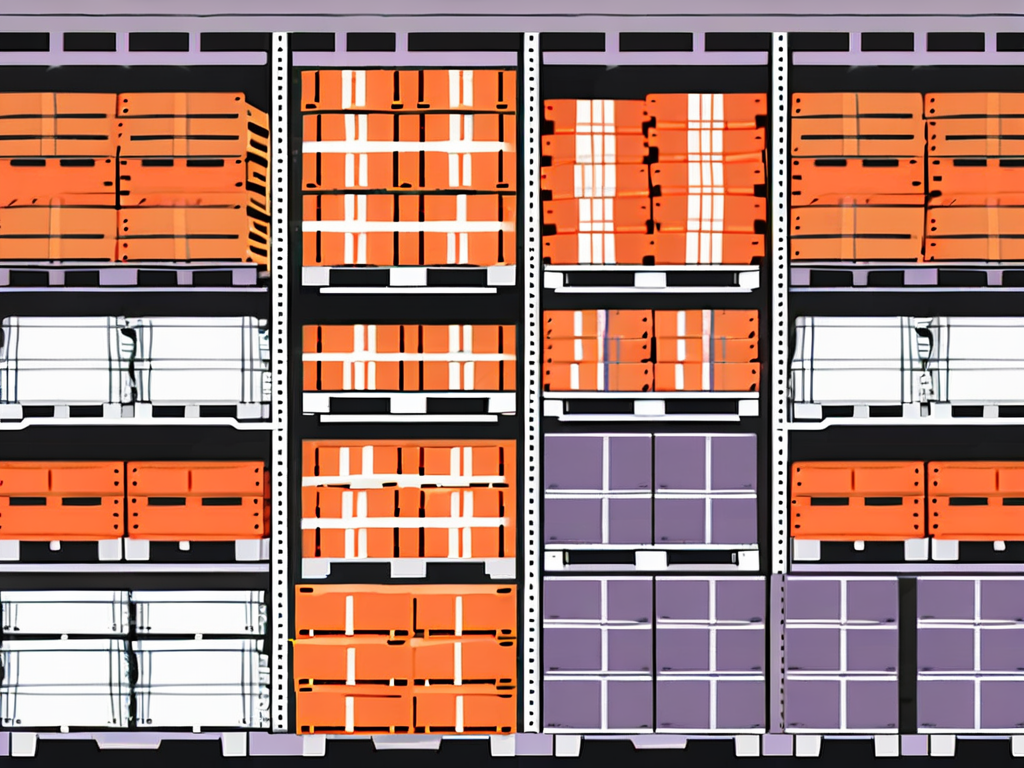Did you know that over 90% of all goods in the world are transported using pallets? That’s right, these simple yet essential tools play a crucial role in warehouse operations worldwide.
But what exactly are the benefits of using pallets, and how do they contribute to the smooth functioning of warehouses? In this article, you will:
- Discover how pallets improve storage efficiency and space utilization
- Learn about different types of pallets and their specific benefits
- Understand the impact of pallets on warehouse safety and organization
- Explore the cost-saving advantages of integrating pallets into operations
Table of Contents
Toggle5 KEY Advantages of Using Pallets in Warehouse Operations
Pallets are essential tools that significantly enhance the efficiency and safety of warehouse operations. By providing stable platforms for goods, they improve storage solutions, streamline workflows, and reduce operational costs. Let’s explore some of the key benefits of incorporating pallets into your warehouse practices:
- Enhanced storage efficiency through vertical stacking and organized storage.
- Improved safety measures by reducing manual handling injuries and preventing accidents.
- Streamlined operations that expedite loading, unloading, and distribution processes.
- Cost-effectiveness by minimizing product damage and extending equipment lifespan.
- Versatility and customization options to suit specific warehouse needs and support various types of goods.
Now, let’s dig deeper into each of these benefits, showing you further how pallets make life easy and boost the efficiency of operations in any warehouse.
Enhancing Storage Efficiency with Pallets
In a warehouse, space utilization is key to maximizing storage efficiency. Pallets play a vital role in achieving this goal. By using pallets, warehouses can stack goods vertically, utilizing the available vertical space effectively.

Moreover, pallets facilitate inventory management. By organizing goods on pallets, it becomes easier to keep track of stock levels and locate specific items. This not only saves time but also reduces errors in inventory management.
Also, pallets come in various types and sizes, allowing warehouses to customize their storage solutions based on the specific needs of their inventory. For example, block pallets are known for their sturdiness and ability to support heavy loads, making them ideal for industries dealing with large and heavy products.
On the other hand, stringer pallets are lighter in weight and are often used for transporting lighter goods.
Finally, pallets are not only beneficial for storage within the warehouse but also play a crucial role in transportation. Palletizing goods not only makes loading and unloading more efficient but also helps in reducing the risk of damage during transit. This is particularly important for fragile or perishable items that require careful handling.
Improving Warehouse Safety through Pallet Use
Warehouse safety should always be a top priority, and pallets contribute significantly to maintaining a safe work environment. By using pallets, the risk of manual handling injuries is reduced. Workers can use forklifts and other mechanical equipment to move palletized goods, minimizing the strain on their bodies.
Pallets also ensure stable stacking and storage. They provide a secure platform for goods, preventing them from toppling or shifting during transportation or storage. This reduces the risk of accidents and damage to both goods and personnel.
Furthermore, pallets enhance warehouse organization and efficiency. They allow for easy categorization and separation of different types of products, enabling quick access to specific items when needed. This streamlined process not only saves time but also reduces the likelihood of errors in picking and packing orders.
Moreover, pallets can be customized to meet specific warehouse needs. From different sizes to materials, pallets can be tailored to accommodate various types of products, ensuring optimal storage and transportation solutions. By investing in pallet customization, warehouses can maximize their space utilization and improve overall operational effectiveness.
Pallets and Warehouse Workflow Optimization
Efficient workflow is crucial in warehouses, and pallets play a crucial role in optimizing operations. By streamlining loading and unloading processes, pallets enable faster turnaround times for trucks and minimize idle time. This ensures a smooth flow of goods in and out of the warehouse.
The use of pallets enhances transport and distribution efficiency. Palletized goods can be easily loaded onto trucks, reducing the time and effort required for manual loading. This leads to faster delivery times and greater customer satisfaction.
Pallets contribute to a safer working environment in warehouses. By providing a stable base for stacking goods, pallets help prevent accidents caused by unstable loads. This not only protects warehouse workers but also reduces the risk of damage to valuable inventory.
Additionally, pallets facilitate better inventory management. With goods organized on pallets, it becomes easier to track and count inventory accurately. This streamlined process minimizes errors and ensures that the right products are always in the right place, improving overall warehouse efficiency.
Cost-Effectiveness of Using Pallets
Cost-effectiveness is another significant benefit of using pallets in warehouse operations. By lowering operational costs, warehouses can allocate resources more efficiently and stay competitive in the market.

Pallets lower operational costs by minimizing product damage. With goods securely stored on pallets, the risk of damage during handling and transportation is significantly reduced. This saves money that would otherwise be spent on replacing damaged goods.
Additionally, pallets help prolong the lifespan of warehouse equipment. By providing a stable and secure platform, pallets reduce wear and tear on forklifts and other handling equipment. This leads to reduced maintenance costs and increased longevity of warehouse machinery.
They are also a crucial in promoting sustainability. Many pallets are now designed to be reusable and recyclable, reducing the environmental impact of packaging materials. By incorporating eco-friendly pallets into their operations, warehouses can demonstrate a commitment to sustainability and reduce their carbon footprint.
Maximize Efficiency and Safety with Smart Pallet Use
In conclusion, pallets are an indispensable tool in warehouse operations. They enhance storage efficiency, improve warehouse safety, optimize workflow, and contribute to cost savings. By using pallets, warehouses can create a more organized and productive environment, ultimately boosting their overall performance.






